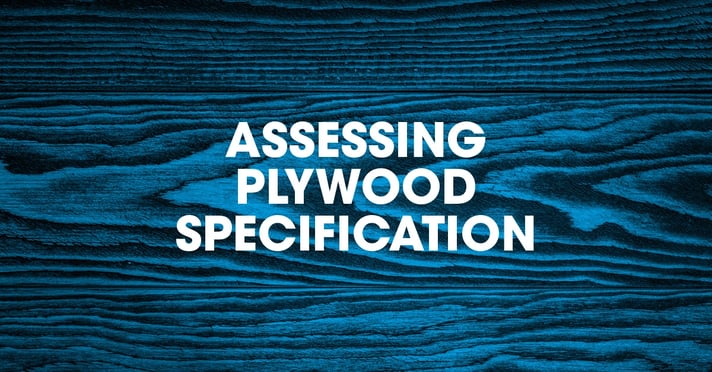What is plywood and how are classifications determined?
Plywood is a versatile product which is produced by gluing together thin layers of softwood or hardwood veneers (or a combination of both). It can have great performance in varying conditions, has an excellent strength-to-weight ratio and can be highly resistance to expansion and shrinking. All of these factors make it a versatile product for a variety of applications within a construction project.
The performance of the plywood depends the interaction between the wood veneers and the glue used to bond them. BS EN 314-2 ‘Plywood. Bonding quality – Requirements’ and BS EN 636 ‘Plywood. Specifications’ classify these performance standards as follows:
BS EN 314-2
BS EN 314-2 outlines 3 classes of bond which is dependent on the intended end use of the plywood. Some of the factors which determines the blond class include the type of adhesive used and the quality of the veneer used.
|
Bond Class |
Suitable use |
|
Bond Class I
|
Suitable for dry interior use only. |
|
Bond Class 2 |
Suitable for use in humid areas or exposure to occasional wetting. |
|
Bond Class 3 |
Suitable for unprotected exterior use or exposure to frequent wetting. |
BS EN 636
BS EN 636 considers both the bond quality and the biological durability of the species of wood used to classify the plywood into environmental conditions:
|
Class |
Climatic conditions |
Suitable use |
|
Class 1 |
Plywood to be used in conditions characterised by a moisture content in the material corresponding to a temperature of 20 °C and a relative humidity of the surrounding air only exceeding 65 % for a few weeks per year. |
Suitable for dry interior use only. |
|
Class 2 |
Plywood to be used in conditions characterised by a moisture content in the material corresponding to a temperature of 20 °C and relative humidity of the surrounding air only exceeding 85 % for a few weeks per year. |
Suitable for use in humid areas or exposure to occasional wetting. This type of plywood is appropriate for protected external applications (e.g. behind cladding or under roof coverings), but is also capable of resisting weather exposure for short periods (e.g. when exposed during the construction). It is also suitable for interior situations where the service moisture condition is raised above humidity of dry conditions. |
|
Class 3 |
Plywood to be used in climatic conditions leading to higher moisture contents than in Class 2. |
Suitable for unprotected exterior use or exposure to frequent wetting - this type of plywood is capable of withstanding exposure to weathering conditions and liquid water, or water vapour in a damp but ventilated location. |
Specifiers should note that both BS EN 314-2 and BS EN 636 are harmonized standards, which means it is not possible to achieve a BS EN 636 class higher than the assessed BS EN 314 class. For example, to achieve BS EN 636 class 2, the board must have a minimum bond quality of BS EN 314 Class 2.
What are the Warranty providers concerns?
The specifiers of plywood are not considering the intended use in each specific situation or the plywood that is being sourced does not match the specification.
Warranty stance
Where plywood specification is not aligned with the intended purpose, it is considered to compromise the ability of the constructed element into which they are used meeting with the Functional Requirements and Performance Standards stipulated by the Technical Manual, notably those relating to durability, material/product testing requirements and intended purpose.
What Developers should action after reading this document?
The correct specification of plywood is an extremely important aspect to managing risk in any construction project. The project designer should use BS EN 314-2 and BS EN 636 to determine the correct specification of plywood for the intended condition.
The Developer must provide evidence that the plywood meets the requirements of the above by using the guidance of BS EN 636 in relation to the environment the plywood is to be used. When on site, the boards should be marked with ‘EN 636’ followed by the conditions of use, -1 for use in dry conditions, -2 for use in humid conditions and -3 for use in exterior conditions. You should also see a letter corresponding to the intended application “S” for structural application or “NS” for general purpose (non-structural application). Finally, the Plywood should also be marked with the commercial name or botanic name of the wood species.
Should you need further help understanding the basic principles and approaches taken when undertaking plywood specification, we would advise referring to the following guidance documents:
- Panel Guide (Annex 2D), 2004, Wood Panel Industries Federation.
- BS EN 314-2:1993 ‘Plywood. Bonding quality – Requirements’.
- BS EN 636:2012+A1:2015 ‘Plywood. Specifications’.

